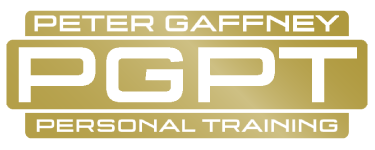Quality over quantity; it’s a relatively simple concept, but it’s one that fits like a square peg in a round hole in today’s health and fitness industry. One of the biggest reasons a quality training isn’t emphasised in the fitness industry as much as it needs to be, is that most people want results as quickly as possible. Unfortunately this can lead to poor information, neglecting key areas of your health or doing something that’s not right for you. (3 min read)
Quantity can be looked at in the length of training time or amount of training per week; there are many ways to train, and what works for one person may not work for another. Some people can train every day using shorter sessions, some three times a week with longer sessions, some only once or twice a week.
Usually three times a week for purposeful training with regular activity/movement done throughout the day is recommended, but everyone’s situation will be slightly different.
For the busy Londoner it can be a struggle to find time to train and stay on top of your health and fitness. This is even more reason to emphasise the quality of training for when you do find the time.
Let’s look at a couple of the potential problems, as well as the solutions to these problems in terms of quality over quantity of training:
Technique:
I see it all the time, local gyms, exercise classes etc. People in a rush, sometimes competitively, using too much weight or resistance (common among the male species in particular) and generally completing movements and exercises with sloppy, incorrect and sometimes dangerous technique. Not only does this increase the risk of injury, but also the effectiveness of the exercise itself along with the purpose of the training session. I’ve seen so many clients hurt themselves through training due to poor technique and subsequently having to take a break from their training or even worse, develop a poor relationship with exercise in general.
Technique is everything. Quality training can take more time at first but it’s a lot more efficient once you learn good movement technique, this equals better fitness, less injury potential and more understanding of what training methods work for your body.
Training Alone:
Piggybacking off the point above, training alone is always a challenge if you want to be doing movements in the right way and maximising their effectiveness…
Here you can use methods such as filming yourself and reviewing your technique, asking a qualified PT/Coach for feedback. You could use less complicated methods of resistance training, or cardio like machine-based work. As long as they’re used correctly it’s a great way to maintain safety and maximise quality movement.
Over-training:
This is often when the quantity of training has outweighed the quality. This can happen when training or exercise has occurred without sufficient recovery. Your body isn’t adapting to the exercise stress because you’re either working too hard, too often or not recovering properly (see next point).
Balancing your week out and finding the right times of the day to exercise as well as how many times a week and how it fits into your overall schedule is key to staying on top of the quality of your training.
Lack of Recovery:
Recovery is key to adapting and seeing your health and weight loss goals achieved. It’s usually the area that a lot of people take for granted. Whether it’s enough sleep, quality nutrition and food choices, or even just life balance and managing stress.
If we step back for a second and look at our lifestyles from a broader perspective. Are you a non-stop ‘on the go’ type of person, finding very little time for yourself, time to train, time to eat and make the right food choices, time to eat mindfully, time to relax and experience some quiet?
The aim at PGPT is for you to take all these areas into account and for your health and fitness to be the driving force of great work/life balance.
Individualised Approach:
Everyone is different; We all lead different lifestyles, different schedules, different bodies with different needs, and perhaps most importantly we all enjoy different things. This must be taken into account when looking at quality versus quantity training. Yes, sometimes you need to do things you don’t want to do in terms of your training (whilst understanding the benefits of course). But you should find training enjoyable, worthwhile and unique to your current situation and life demands.
Whether an individual is choosing the best exercises to achieve his/her goals. Whether it’s a mix of low/high intensity exercise including resistance training for someone to achieve weight/fat loss; or for someone to incorporate basic primal movement patterns, flexibility and mobility work into their routine to be in less pain and to move and feel better during the day.
Find out what works for you, commit to it and be consistent.
Yours in quality training ,
Yudi


